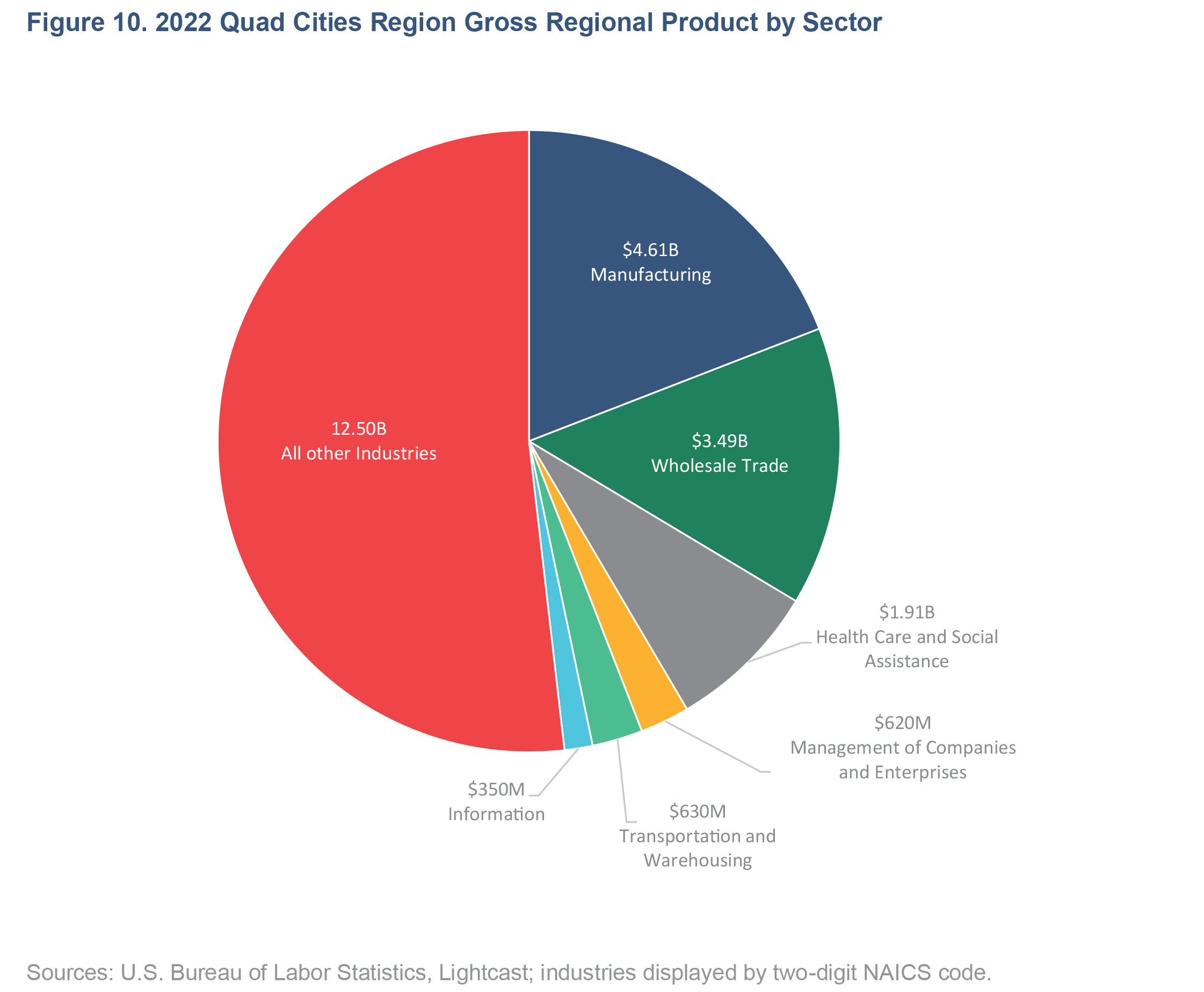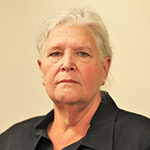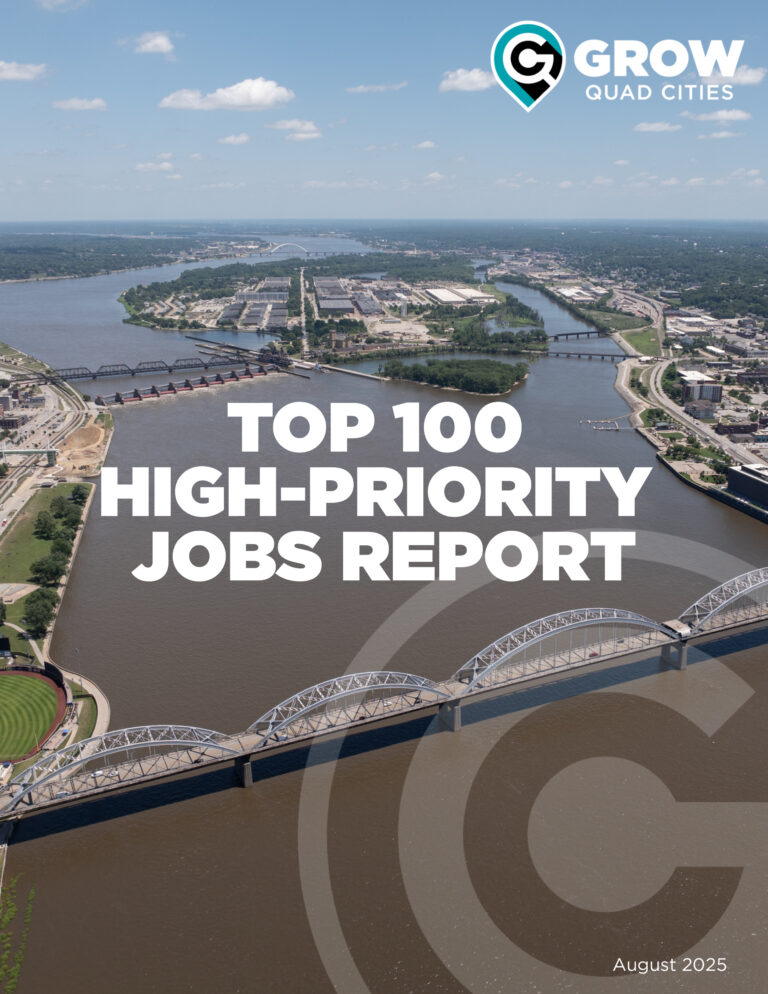To create a thriving region rich in life-changing career opportunities, the Quad Cities must align its education pathways with the workforce demands of today, according to a ground-breaking report that will serve as a model for the rest of Illinois.
Jennifer B. Barnett, the Illinois Board of Higher Education’s (IBHE) associate director of workforce analytics, told the QCBJ the mission of “Thrive Quad Cities” was to create a scalable model that would guide future workforce development efforts here and in other regions throughout the state. The IBHE’s goal is to help communities align education opportunities with workforce needs by creating a comprehensive workforce and education landscape analysis.
“This analysis will be instrumental in carrying out important, strategic work that will accelerate access to meaningful and life-changing careers for Illinoisans in the Quad Cities region,” IBHE Executive Director Ginger Ostro said at the report’s January release.
Thrive QC is the first of what is expected to be a series of assessments by the IBHE to serve the organization’s statewide “A Thriving Illinois” strategic plan. This region was selected to launch that effort because of the Quad Cities’ heavy reliance on manufacturing and other related industries. “It’s a really unique area, particularly in that it crosses state lines and it encompasses a lot of rural areas as well as being a minor metropolitan area so it was a great microcosm of the state,” Ms. Barnett added.
In addition, she said, well before the assessment’s launch questions were being raised about whether or not Quad Cities employers were able to obtain the skilled talent they needed. “There was a need for an understanding of what the landscape actually was.”
So in 2023 the IBHE began partnering with the Center for Economic Mobility at WestEd to create the Quad Cities Thrive report. The nonpartisan education research, development, and service agency began by thoroughly analyzing the Quad Cities education, higher education and workforce landscape, Ms. Barnett said.

Meeting QC needs
Overall, the report said, “The primary question driving the analysis was ‘How can higher education be responsive to the region’s education, training, and economic needs?’”
To answer that, WestEd focused on areas where higher education can help communities deal with workforce shortages and help students get the skills they need for in-demand, well-paying jobs through degree, training or certification programs.
In the Quad Cities, Ms. Barnett said “There is a need for both the trades as well as higher education, post-secondary nontrade professional level.”
Among the area’s highest-demand occupations is general manager. There also is a broad need for workers in construction, manufacturing, team assemblers, machinists, transportation and warehousing, truck drivers and other material movers, she said. And, “of course, we’re all very aware of the health care shortages.” Other in-demand careers are software developers, engineers and analysts as well as unmet job opportunities in business and administration.
During that process, “the need for managers and accounting professionals bubbled up, which was a little bit of a surprise to me considering the manufacturing factors in the Quad Cities,” said Ms. Barnett, a Quad Cities transplant who relocated to Moline last year.
“I absolutely love it here,” she told the QCBJ, “so it was really exciting to be part of this particular project and marry both my new home as well as my 20-plus years of workforce development that I brought from both Louisiana and Florida.”
Helping inform the Thrive Quad Cities project is a large advisory group made up of Quad Cities leaders who included Christine Caves, the Quad Cities Chamber’s vice president of business retention & expansion, workforce.

Report a ‘great prompt’
“As a legacy manufacturing community it’s important for us to recognize the occupational gaps that we have,” Ms. Caves said. It’s also important to find out “where we need to dig in to help support workforce pipelines,” she said, adding, “This is a great prompt, this report, to dig into occupational gap analysis.”
Among challenging areas identified were the lack of in-demand workforce credentials, helping higher-ed address those gaps and finding out “what are those jobs that we still need?” she said. They include health care, manufacturing and engineering. “Those stories came across loud and clear,” Ms. Caves said.
Another critical need is work-based learning and apprenticeship opportunities, Ms. Caves said. She also pointed to the need for more career awareness by young people and students. Important, too, she said, is finding resources to support and help families stay in the workforce, for example, child care, public transportation, supporting individuals who need specialized help to access training, and addressing equity gaps in completion rates for some high-wage occupations.

“Understanding the needs of our local workforce and making sure that we have proportionate representation of people across gender, race and ethnicity in high-demand high quality jobs; we can all do a better job there,” Ms. Caves added.
Illinois State Sen. Mike Halpin, D-Rock Island, is optimistic about what the Thrive Quad Cities process will help the region accomplish. “Through the education and workforce analysis, we have a clearer vision of the needs and goals to better serve the residents in the Quad Cities,” Mr. Halpin said. “By being able to see where resources are needed to succeed, we are now able to continue leading the charge in investing into the future of our community.”

Western Illinois University President Kristi Mindrup told the QCBJ recently she is pleased that the Quad Cities and Macomb campuses already are working on the goals contained in the Thrive QC report. For example, she said, “Western Illinois University is launching several initiatives to help shape the next evolution of WIU-QC, including growing opportunities for local business through procurement and development assistance and building on programs that will position Western Illinois University to implement the community needs.”
Increasing employment opportunities also is important because Ms. Barnett said “many workers and students are still leaving the region and that’s always concerning for any area.”
The analysis also found some jobseekers do not understand what local high-wage opportunities are available, she added. And while communities are working together to attack the problem, there is fragmentation in the K-12, post-secondary institution and employer spaces.
Opportunity for collaboration
“Individuals or organizations still are operating somewhat in silos, so there is a tremendous opportunity to continue that collaborative effort that this report – this assessment project – really helped bring about, and I was really excited to be working with all of the stakeholders through this entire process,” Ms. Barnett said.
Among the areas of opportunity identified are the “disparities existing in the access to high-wage careers based on gender and race and ethnicity and then also the post-secondary training gaps,” she added. “We anticipated that there might be some gaps and we did identify the need for more programs in business, health care, IT and the skilled trades.”
Those gaps are why employers should be engaging in this workforce development effort. “Right now the stakeholders – all of higher education, all of K-12, all of economic development and workforce development – they all have their ears wide open ready to listen, ready to hear what the employers are needing,” Ms. Barnett said.
Whether Thrive Quad Cities results in effective action depends on whether education leaders and the Quad Cities community – including the business sector – take the lead.
“I do know that there are existing ongoing efforts right now from the stakeholders to carry this report and those efforts forward and so those are being formalized, which I think is going to give a greater opportunity for employers to engage,” Ms. Barnett said.
What comes next?
A key recommendation from advisory group leaders is to continue collaborating.
“When we met, many of the stakeholders and contributors to the assessment did decide that ‘yes, we want to move forward in having an identified convener,’ and they did identify the Quad Cities Chamber to act as that convener,” she said. “It has the full support of everyone that was present at the meeting in October.”
Whoever takes the lead, Ms. Barnett said the IBHE will continue to support the region and provide insight and information to local leaders. For example, the report’s data will be updated annually to reflect education and experience levels needed for available jobs. It also will allow individuals to compare experienced worker wages vs. entry-level ones across occupations. Customized reports also will be available education leaders, economic developers, businesses and the public.
“I have committed as associate director of workforce analytics to continue to provide updated data to the region,” Ms. Barnett added.
What the region does with that data will be up to the Quad Cities collaborative.
“It’s the stakeholders who will actually pick up the baton and carry this forward working with higher education, K through 12, economic development, community-based organizations, governmental entities, all working together,” she said.
The community has made a good start.
“I was so amazed and so pleased having done this type of work for decades now at the willingness to collaborate and cooperate and not seeing a lot of territorialism that you sometimes see in this type of work,” Ms. Barnett said. “I think the region really has limitless opportunities to grow and expand.”
THRIVE QC FINDINGS
- Workforce gaps: Shortages in high-demand sectors, including manufacturing, health care, information technology and transportation.
- Equity challenges: Disparities in educational attainment and workforce participation across gender, race and ethnicity.
- Collaboration opportunities: A pressing need for regional collaboration to break down silos between K-12 education, post-secondary institutions and industry leaders.
- Regional stakeholders and partners: Elected officials, higher education institutions, K-12, workforce development, community-based organizations and employers all played a pivotal role in informing the analysis. Moving forward, these organizations are eager to collaborate with the Quad Cities Chamber to better meet the needs of the region
Source: Illinois Board of Higher Education
THRIVE QUAD CITIES GOALS
- Filling gaps in the workforce needed in high-demand sectors and the currently available post-secondary offerings.
- Improving the accessibility and affordability of local post-secondary programming in high-demand occupation training programs.
- Examining ways to remove barriers for teachers to become dual credit or English Language Learners (ELL) certified; and increasing meaningful connections among employers and education partners.
- Joining regional partners such as The Grad Center, which has begun to take advantage of the report’s findings to better support the community’s training needs. Plans also are in place to provide annual updates on workforce and higher education data, ensuring the analysis remains a living resource for regional decision making.
Source: IBHE








